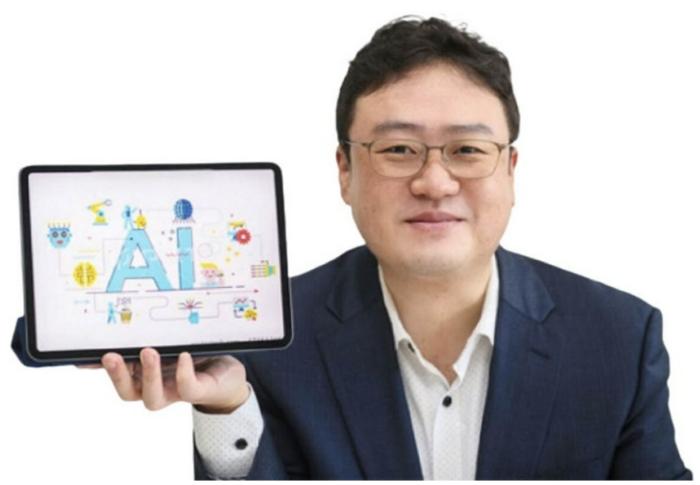
Recently, a paradigm shift in the realm of artificial intelligence has emerged, particularly in the field of text-based image generation. Traditional models, such as Stable Diffusion, have demonstrated significant prowess in creating high-resolution images based purely on text descriptions. Yet, despite their advancements, these models often fall short when tasked with generating truly creative images. A team from the Korea Advanced Institute of Science and Technology (KAIST), led by Professor Jaesik Choi, has made groundbreaking strides in addressing this limitation. Through the innovative enhancement of such generative models, they have paved the way for AI to produce designs that transcend typical notions of creativity.
The challenge with existing models is their inability to generate unique outputs in response to abstract prompts, such as the term “creative.” Recognizing this limitation, Choi’s research team set out to develop a technology that amplifies creative output in AI image generation without necessitating additional training. This development is particularly significant as it allows for a more dynamic exploration of design possibilities by enhancing the internal mechanisms through which AI interprets and generates images.
Employing sophisticated computational techniques, the researchers focused on manipulating the internal feature maps of the text-based image generation models. They identified the crucial role that shallow layers within the models play in this creative process. By specifically targeting these shallow structures, the team realized they could amplify certain aspects of the internal feature representation to foster a more inventive form of generation. This intricate process involves converting feature maps into the frequency domain, which allows for selective enhancement of both the high and low-frequency components, ultimately steering the output toward more creative avenues.
.adsslot_JbknuBwN6i{width:728px !important;height:90px !important;}
@media(max-width:1199px){ .adsslot_JbknuBwN6i{width:468px !important;height:60px !important;}
}
@media(max-width:767px){ .adsslot_JbknuBwN6i{width:320px !important;height:50px !important;}
}
ADVERTISEMENT
During their research, the KAIST team experimented with amplifying values in various frequency regions. They discovered that amplifying low-frequency regions, particularly within shallow blocks of the network, significantly bolstered the model’s creative capabilities. Conversely, enhancing high-frequency values often led to noise or disruptive visual artifacts in the generated images. This nuanced understanding of frequency manipulation was pivotal in developing their algorithm aimed at improving creative output without altering the foundational architecture of the model.
Moreover, the researchers devised an automated algorithm that fine-tunes the amplification parameters based on the internal structure of the generative model. This algorithm’s optimization process meticulously selects the amplification values for each block within the AI framework. By doing so, they could achieve a delicate balance between originality—defined as the novelty and uniqueness of the generated content—and usefulness, ensuring that the images produced remained relevant and practical.
The quantitative results from this initiative are compelling. The KAIST team employed multiple metrics to validate the effectiveness of their new algorithm. Their findings demonstrate a significant improvement in the novelty of images produced compared to those created using traditional models. With their method, the researchers successfully mitigated the common mode collapse problem, particularly noted in contemporary iterations like the SDXL-Turbo model, which was designed to enhance image generation speed. By overcoming such obstacles, the research team achieved a notable increase in image diversity—a critical factor in fostering creativity.
In conducting human evaluations, the researchers sought to understand the subjective perceptions of users regarding the novel images produced by their algorithm. The results corroborated their quantitative findings, revealing a marked enhancement in the perceived novelty without sacrificing utility. These user studies underscored the practical implications of their research, demonstrating that the methodologies they developed resonate with both artistic and functional requirements.
Ph.D. candidates Jiyeon Han and Dahee Kwon, who served as co-first authors on the paper detailing this research, emphasized the significance of their work. They noted that this approach is a pioneering step towards enhancing the inherent creativity in generative models without necessitating new training or fine-tuning. The ability to manipulate existing models through feature map adjustments not only showcases innovative thinking but also opens new frontiers in the practical application of AI in creative fields.
This advancement holds substantial promise for an array of applications, stretching from product design to advanced visual arts. By allowing users to create imaginative and diverse visual content solely from descriptive text, the potential to inspire innovation within various sectors is immense. The implications extend far beyond mere academic interest, suggesting a transformative influence on industries reliant on design and aesthetics.
The research was recently spotlighted at the International Conference on Computer Vision and Pattern Recognition (CVPR), where it garnered significant attention from scholars and industry leaders. The authors shared their findings through the paper titled “Enhancing Creative Generation on Stable Diffusion-based Models,” which invites further exploration and discourse in the AI research community.
Support for this groundbreaking research was provided by multiple initiatives, including the KAIST-NAVER Ultra-creative AI Research Center and various projects sponsored by the Ministry of Science and ICT. These collaborations reflect a broader commitment to advancing AI technologies that emphasize ethical considerations and innovative capabilities in line with contemporary societal needs.
Significantly, the methodology introduced by Professor Choi’s team illustrates a broader trend in AI research: the drive towards making powerful tools accessible and effective without the necessity for extensive retraining or modification. As the field continues to evolve, new methodologies that enhance existing frameworks without requiring vast amounts of new data will likely shape the next generation of AI outputs and creative potentials.
With these advancements, researchers, designers, and artists can harness the capabilities of AI models to explore unprecedented creative avenues. The techniques discussed not only enhance the functionality of tools like Stable Diffusion but also cultivate a deeper understanding of the underlying mechanics driving generative models. The future of creativity, as envisaged by the work done at KAIST, promises exciting developments that bridge the gap between AI and human artistry.
The continued exploration and refinement of these techniques herald a new era in AI-assisted creativity, leveraging the latent capabilities of trained models and expanding the horizons of what is possible in design and visual creation.
Subject of Research: Not applicable
Article Title: Enhancing Creative Generation on Stable Diffusion-based Models
News Publication Date: 16-Jun-2025
Web References: 10.48550/arXiv.2503.23538
References: N/A
Image Credits: Statistical Artificial Intelligence Lab @KAIST
Keywords
Artificial Intelligence, Image Generation, Creativity, Feature Map Manipulation, Stable Diffusion, KAIST, Novelty, User Studies, Algorithm Development
Tags: AI image generationcomputational techniques in AIcreative artificial intelligencedynamic design explorationenhancing AI creativitygenerative models evolutioninnovative design technologiesKAIST research advancementsovercoming creativity limitations in AIProfessor Jaesik Choi’s researchtext-based image synthesisunique output generation in AI






